name one feature present in both an animal cell and a plant cell.
Animal cells have one or more small vacuoles whereas plant cells have one large central vacuole that can take upto 90 of cell volume. In spite of the plant and animal cell differences listed above there are common features shared by both the cell types.
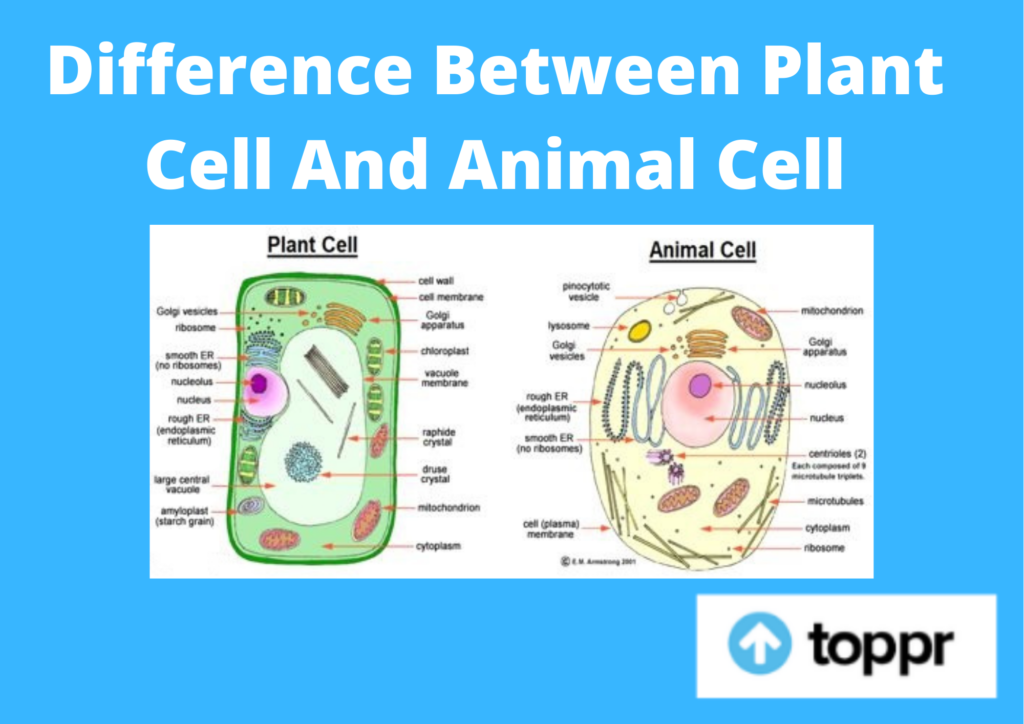
Difference Between Plant Cell And Animal Cell In Tabular Form
Cell wall is absent.
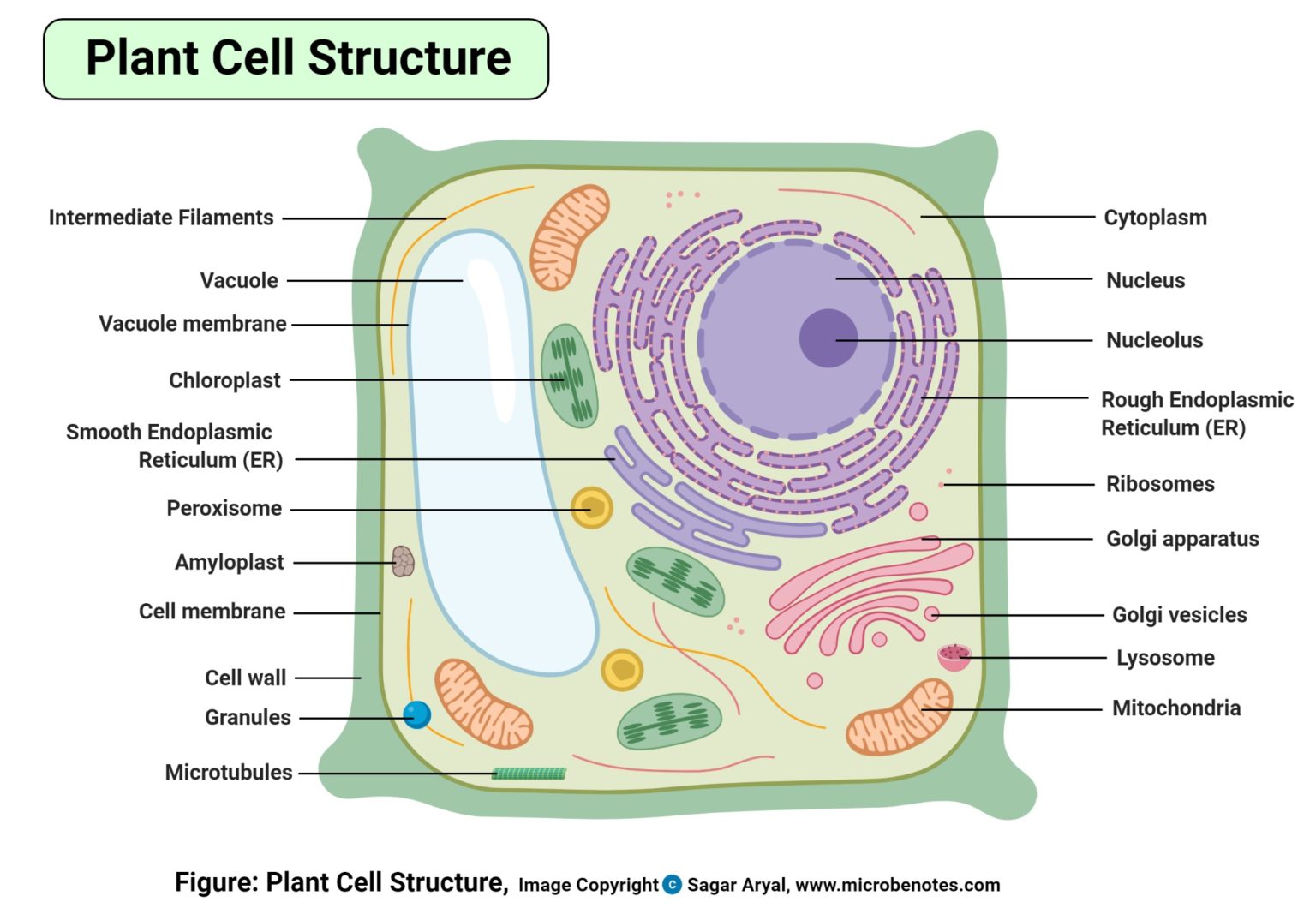
. The functions of these organelles are extremely similar between the two subjects of cells. Both have a cell nucleus. Animal cells each have a centrosome and lysosomes whereas plant cells do not. In addition to the three basic features found in animal cells plant cells have some useful extra ones.
Vacuoles- Are present in both plant and animal cells. Similar to the animal cell the plant cell comprises the nucleus and other membrane-bound cellular organelles. The plant cell and the animal cell can be differentiated by the presence of organelles in themAlthough both are classified as Eukaryotes the presence of the cell wall vacuoles and chloroplasts are the most remarkable and distinguishing components of the plant cells which are absent in the animal cells. Food material is reserved as starch in plant cells and as glycogen in an animal cell.
Here is a diagram of a typical plant cell. Beyond size the main structural differences between plant and animal cells lie in a few additional structures found in plant cells. The cytoskeletal and cytosol elements comprise to be the major parts of both the plant cell vs animal cells. Plant cell Animal cell Shape of cells.
So both plant and animal cells have a nucleus endoplasmic reticulum with ribosomes and Golgi apparatus But here the similarities end. One huge vacuole is present in plant cells while on the other hand numerous and small vacuoles are present in animal cells. Vegetative cell division and reproductive cell divisionThe vegetative cell division which produces genetically identical two daughter cells is called mitosis. Vacuoles vary in number and position.
A complex called the centrosome. They are different from plant cells in several fundamental factors. The lysosome is the cellular disposal system breaking down unwanted materials from the cytoplasm. The centrosome is the microtubule-organizing center of the cell giving rise to the mitotic spindle.
There is a reason for that. In plant cells the function of vacuoles is to store water and maintain turgidity of the cell. Both have the Golgi apparatus. In animals they are small and numerous in quantities and are scattered all over the cell but in the plant cell only one or two large vacuoles are present which.
Main Difference Plant vs Animal Cell Division. Both plant cells and animal cells are Eukaryotic cells. Likewise the plant and animal also have similar membranes such as cytosol and cytoskeletal elements. Vacuoles in animal cells store water ions and waste.
Plant cells are eukaryotic cells that vary in several fundamental factors from an animal cell. Both plant and animal cells comprise membrane-bound organelles such as endoplasmic reticulum mitochondria the nucleus Golgi apparatus peroxisomes lysosomes. Plant cells exposed to sunlight possess chlorophyll containing plastids called chloroplasts which are useful for photosynthesis. Cell division both in plants and animal cells can be divided into two types.
What Are the Similarities Between Plant and Animal Cells. Plant and animal cell division occur as a part of their life cycle. Centrosomes These are present in animal cells while being absent from the plant cells. Firstly they have a rigid cellwall made of fibres of cellulose which we use to make paper that gives them shape and strength.
It is present in both cell types. Plant cells are regularly organized and are usually. Thus in the concluding note each and every cell. Some animal cells do have a vacuole.
The nucleus carries most of the genetic material in the chromosomes which carry the genetic information in the form of DNA deoxyribonucleic acid. Plant cells also come in a variety of forms but share similar features. After all both are eukaryotic and have complex membrane bound organelles. In case of animal cell the cell wall is absent and cell is enclosed by plasma membrane.
The most evident similarities between plant cell vs animal cells are the presence of organelles like peroxisomes mitochondria nucleus Golgi bodies endoplasmic reticulum and lysosomes. Vacuoles are small and temporary. The plant cell can also be larger than the. While both animal and plant cells have microtubule organizing centers MTOCs animal cells also have centrioles associated with the MTOC.
Single highly complex and prominent. Plant cells are autotrophs and have the ability to make. Plant cells are able to synthesize nutrients like vitamins amino acids and co-enzymes while animal cells are unable to do so. Plastids are absent except euglena.
Plant cells can be larger than animal cells. Both the plant and animal cell contain the membrane-bound organelles like the endoplasmic reticulum nucleus mitochondria Golgi apparatus Lysosomes etc. At this point you know that each eukaryotic cell has a plasma membrane cytoplasm a nucleus ribosomes mitochondria peroxisomes and in some vacuoles but there are some striking differences between animal and plant cells. In addition plant and animal cells.
Since both of the animal cells and plant cells are classified under the same category of eukaryotic cells they have some functional similarities in between them. In class plant cells are usually used for experiments more often than animal ones. Even the size of the animal cell is smaller than the plant cell. In case of animal cells chlorophyll is absent.
Cell membrane is present both in plant and animal cells. What Is an Organelle. But plants have a cell wall in addition. The two cellular structures found in animal cells but not in plant cells are the centrosome and the lysosome.
Generally small in size. Plant and animal cells both have a nucleus endoplasmic reticulum ribosomes a Golgi apparatus vesicles mitochondria and a cell membrane. They are similar in structure. Lysosomes are organelles not evident in a plant cell while they are found in an animal cell.
These lysosomes are present in the cytoplasm of an animal cell and store enzymes for the breaking down of nutrient molecules. The cell wall fits closely. Organelles perform various functions to keep the cell alive. A plant cell has a rigid cell wall on the outside.
Do both animal and plant. But plants have a cell wall in addition. Both plant and animal cells are eukaryotic in nature having a well-defined membrane-bound nucleus. The normal range for an animal cell varies from 10 to 30 micrometers while that for a plant cell stretches from 10 to 100 micrometers.
Animal cells are eukaryotic cells that contain a membrane-bound nucleus. Each of these components work together to keep the cell healthy and functioning properly. These are cells that contain a well-defined nucleus and in which the other organelles are held together by membranes. In sum although both plants and animals possess eukaryotic cells which have some common characteristics they differ from each other in many aspects.
Animal Cell Similarities Cell Type. 8 rows Animal cells and plant cells also contain tiny objects called mitochondria in their cytoplasm. Both plant and animal cells have ribosomes and mitochondria. An organelle is any specialized structure that is contained within a cell.
They also have similar membranes such as cytoskeletal elements and cytosol.
Difference Between Plant Cell And Animal Cell For Class 9 Cbse Class Notes Online Classnotes123
What Are The Parts Of Animal Cell And Plant Cells Quora
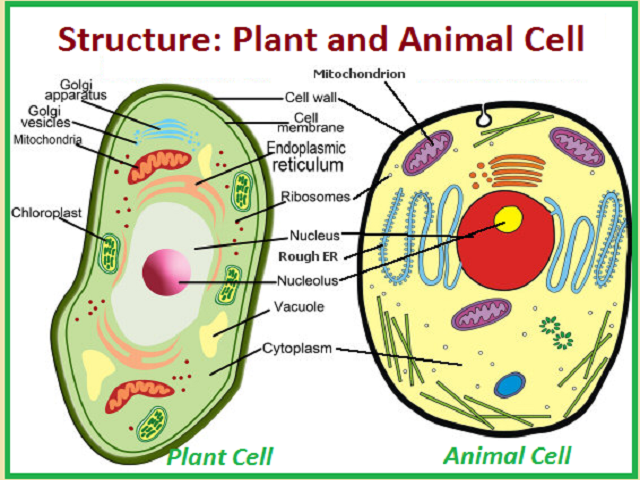
What Is The Structure Of Plant And Animal Cells
What Are The Parts Of Animal Cell And Plant Cells Quora
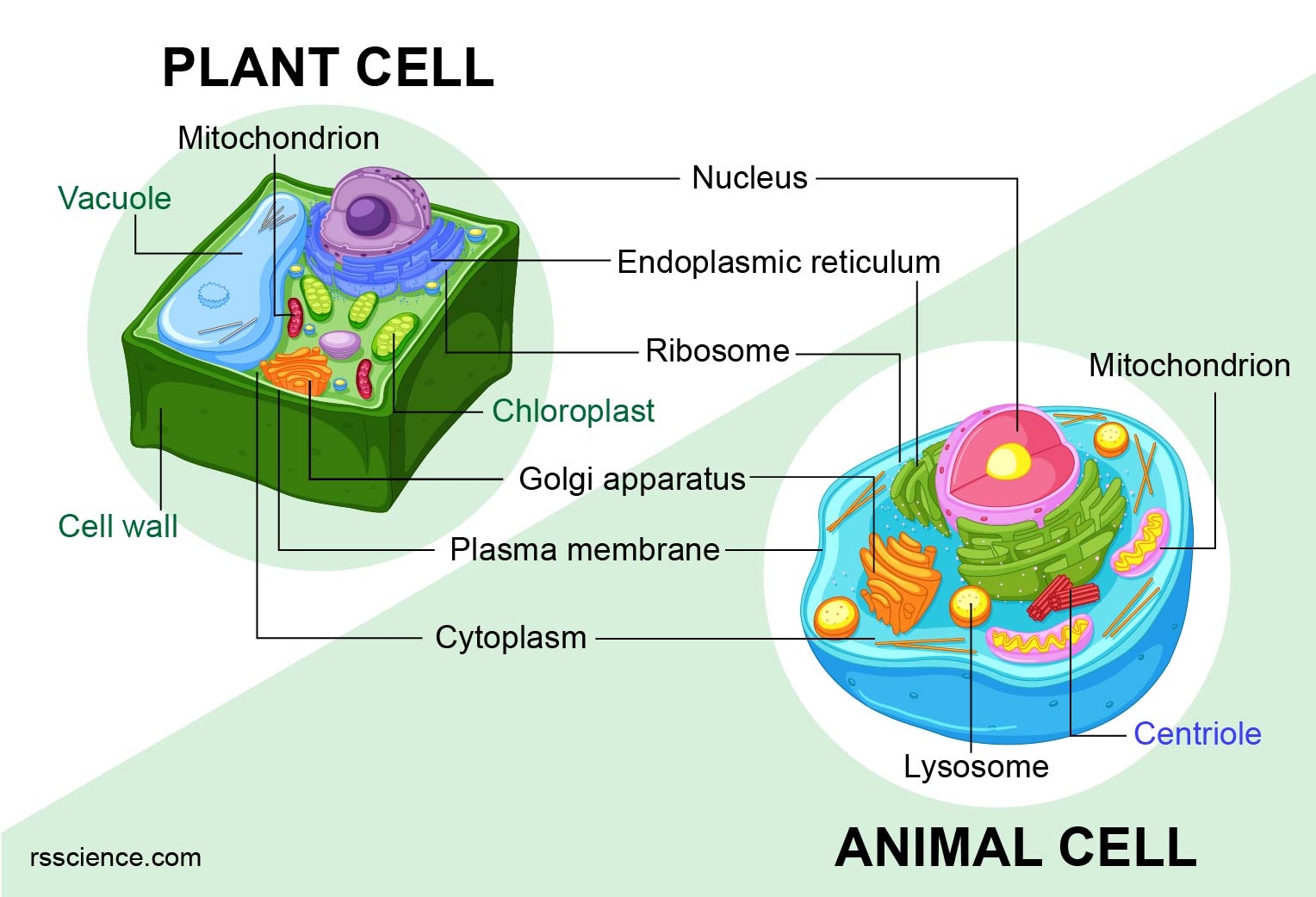
Animal Vs Plant Cells Similarities Differences Chart And Examples Rs Science
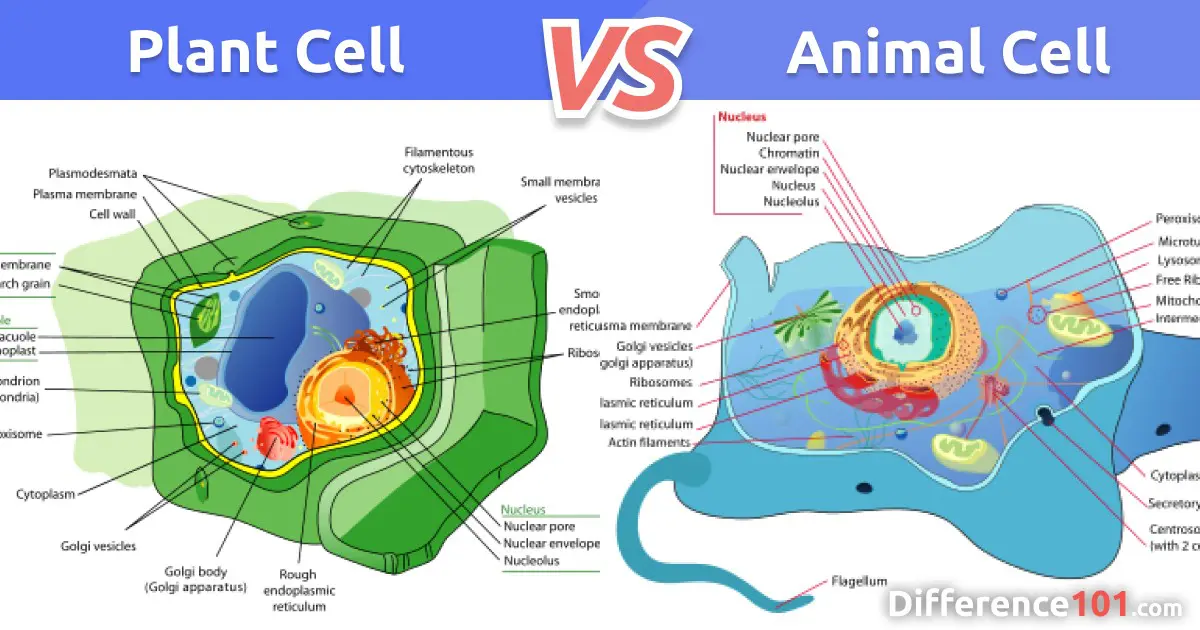
Plant Cell Vs Animal Cell 5 Key Differences Difference 101

Unique Features Of Animal And Plant Cells Biology For Majors I

Plant Cell Definition Labeled Diagram Structure Parts Organelles
Posting Komentar untuk "name one feature present in both an animal cell and a plant cell."